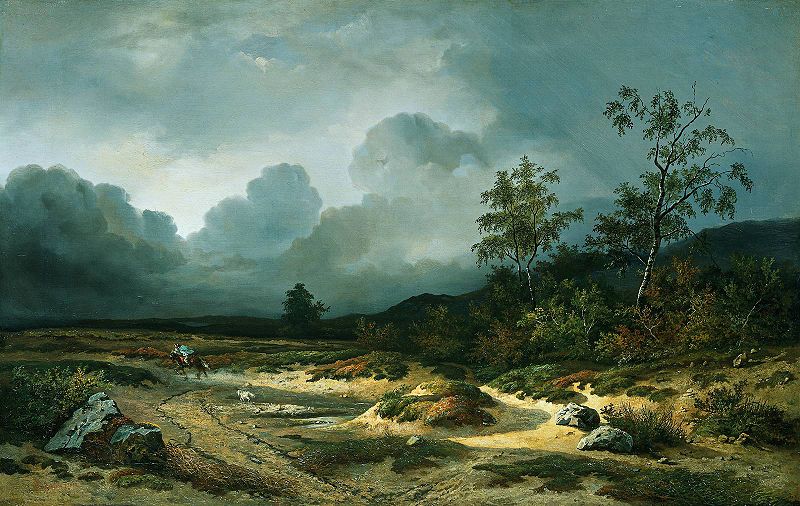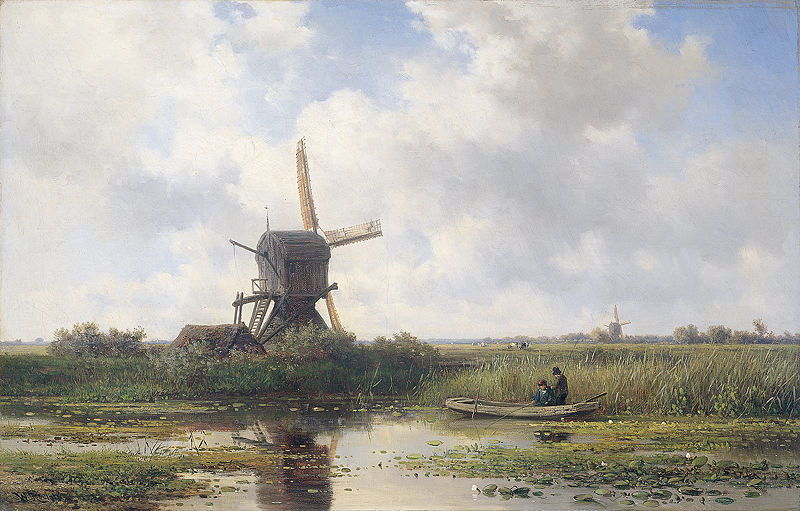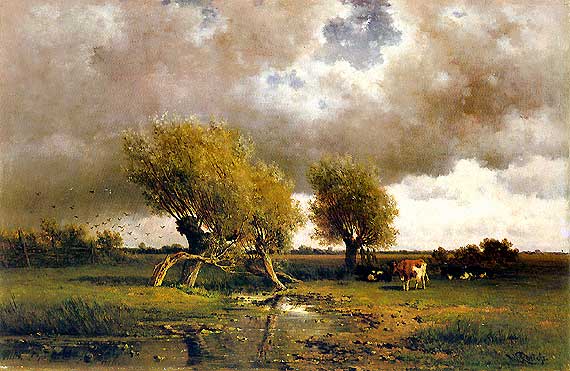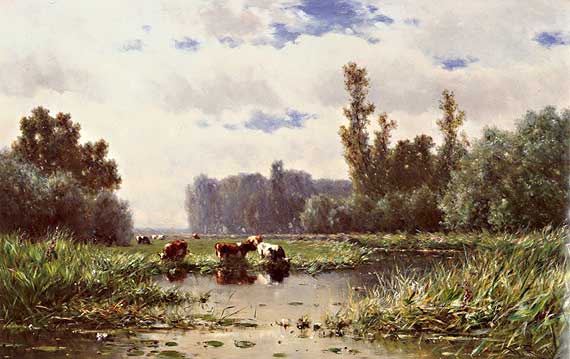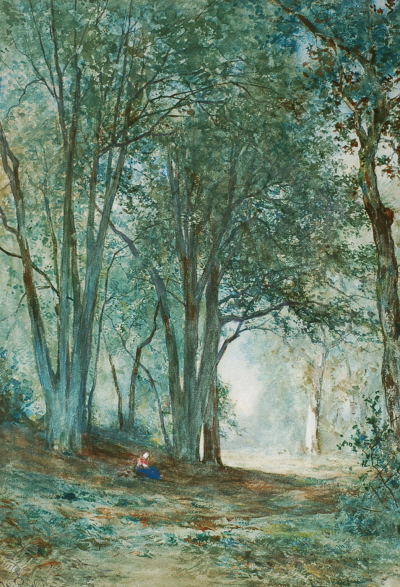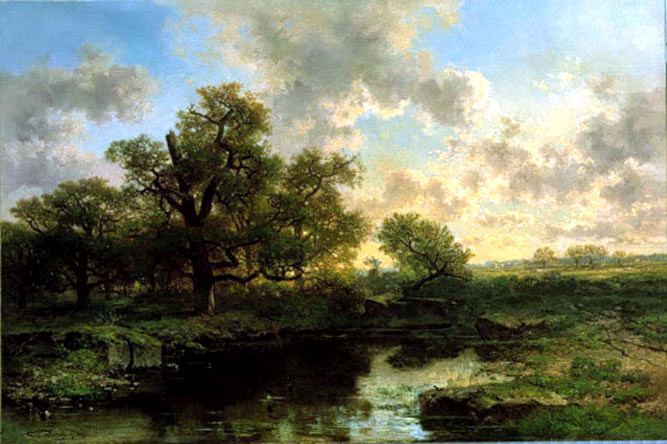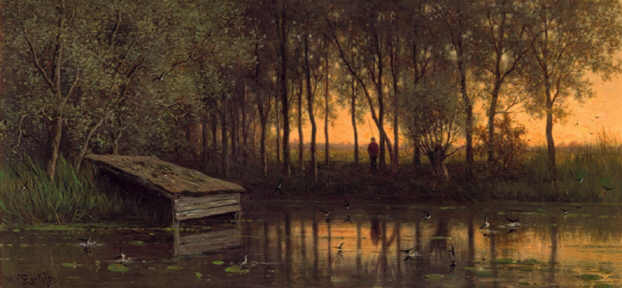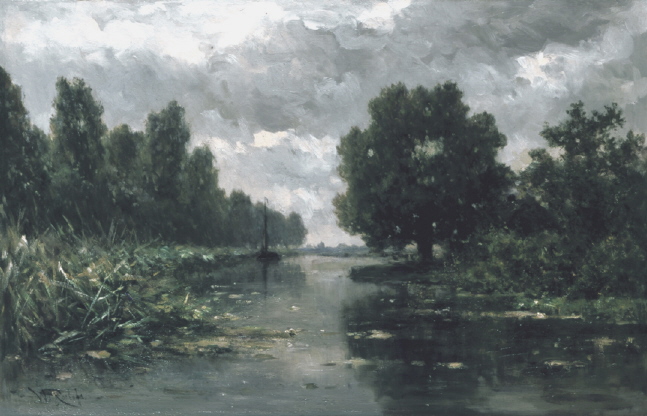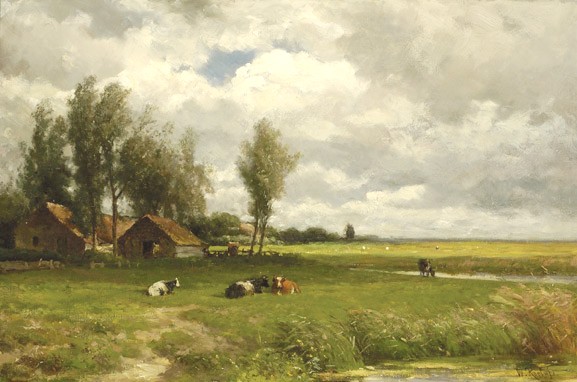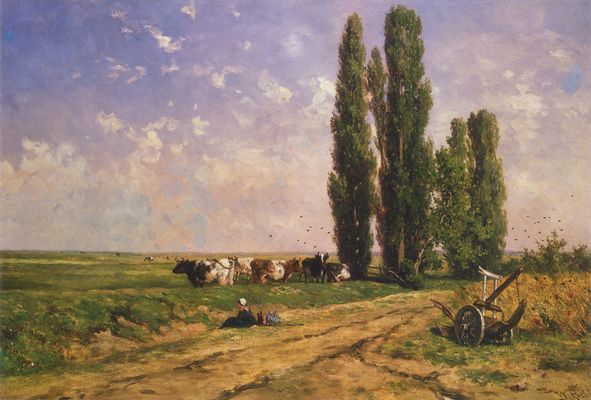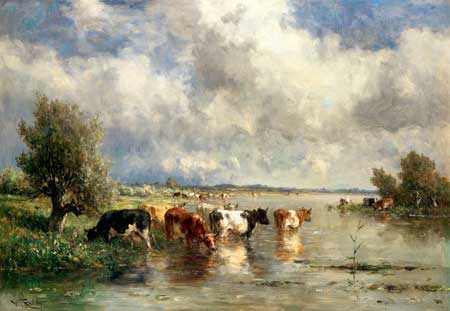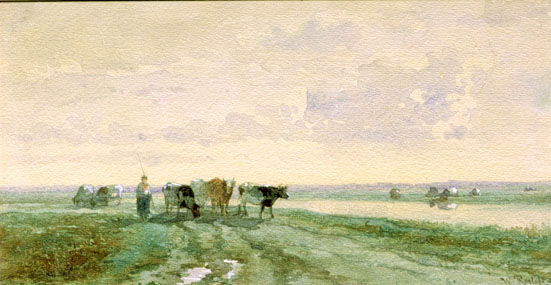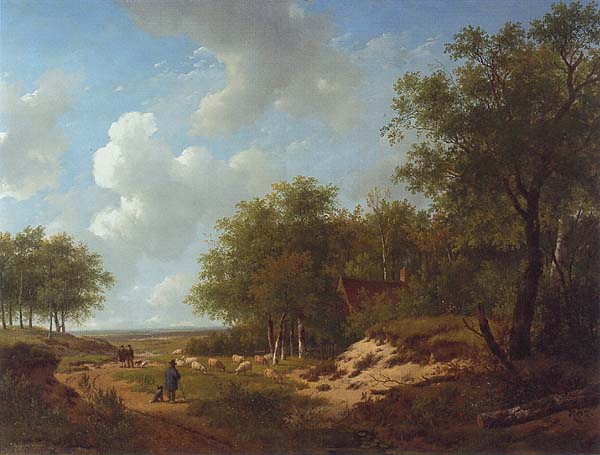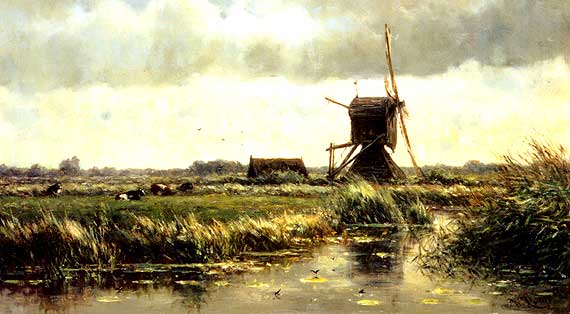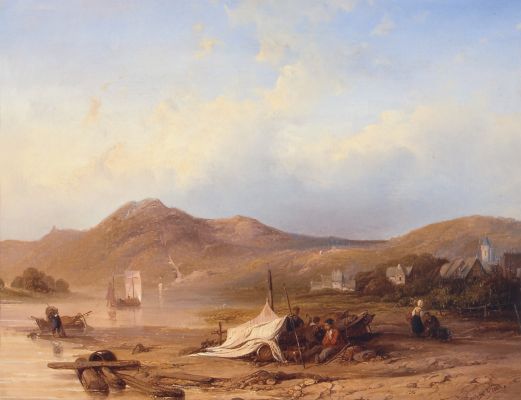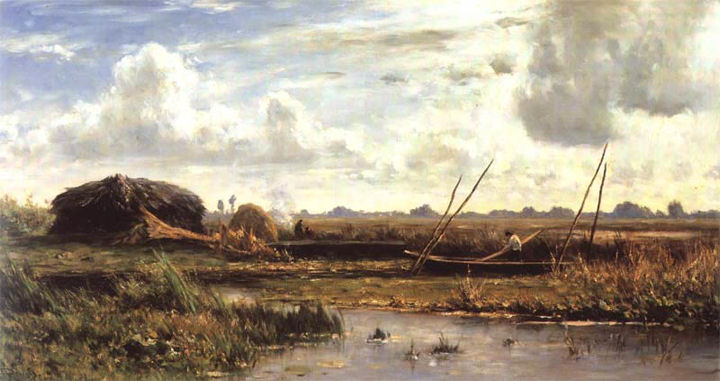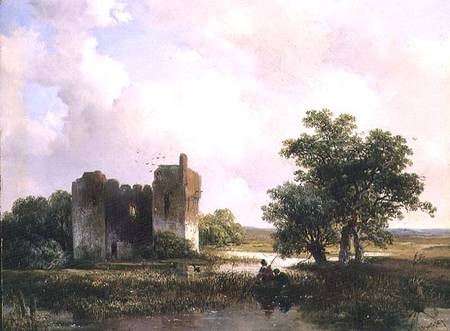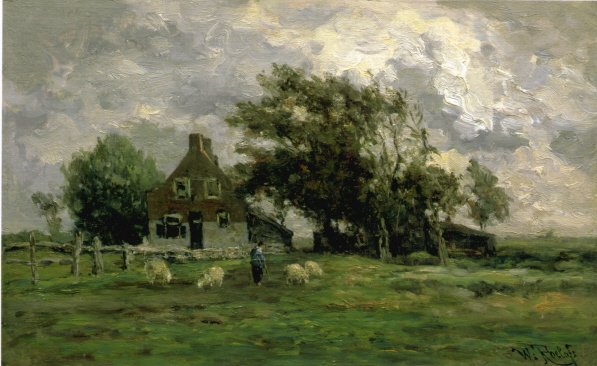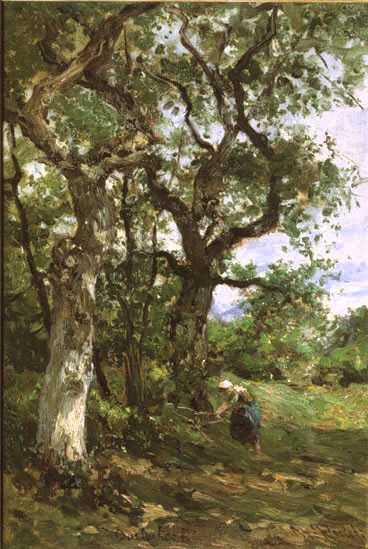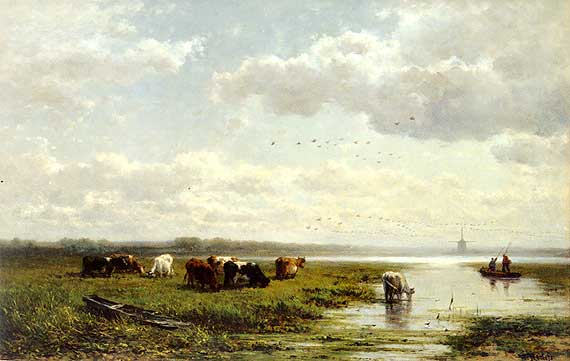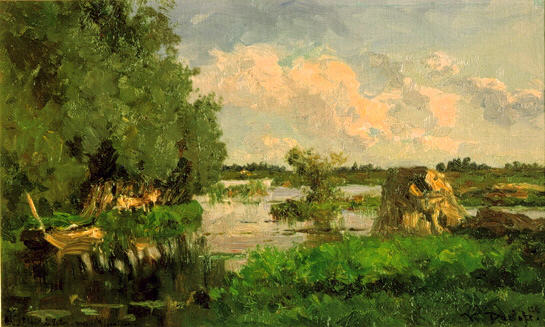<Back to Index>
- Mathematician John Playfair, 1748
- Painter Willem Roelofs, 1822
- Holy Roman Emperor Ferdinand I, 1503
PAGE SPONSOR
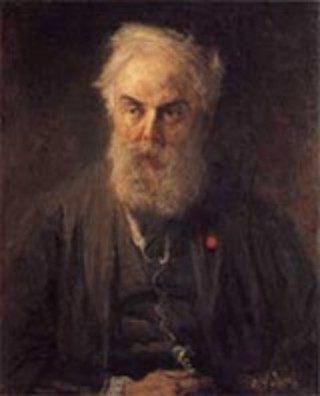
Willem Roelofs (March 10, 1822, Amsterdam - May 12, 1897, Berchem) was a Dutch painter, water-colourist, etcher, lithographer and draughtsman. Roelofs was one of the forerunners of the Dutch Revival art, after the Romantic Classicism of the beginning of the 19th century, which led to the formation of The Hague school.
Willem Roelofs was born in Amsterdam on 10 March 1822. When he was a young man his family moved to Utrecht, where his father became an enlisted member of the Painters and Draughtsmen Society in Utrecht. In June 1839, they moved to The Hague so that the young Willem could study in the Academy for Visual Arts in that city and train in the atelier of H. van Sande-Bakhuyzen. In 1847, he was involved in the establishment of the artists society “The Hague Pulchri Studio”. In 1847, he left The Hague rather suddenly and went to live in Brussels; he remained there until 1887. From 1866 up to 1869, he trained Hendrik Willem Mesdag, who would develop into one of the masters of The Hague school. His other students were Paul Gabriël, French Smissaert, Willem the Famars Testas and Alexander Mollinger. In 1851, he was captivated by Barbizon in the Fontainebleau area of France. He returned there twice, in 1852 and 1855. He helped with the foundation of the Societé Belge Aquarellistes in Brussels in 1856.
His landscapes, especially the early ones with their dominating cloudy skies, demure bodies of water and populated with cattle, are typical for the School of Barbizon.
He unmistakably provided the spiritual impulse for the painters of nature that would later dominate The Hague school. Beside painting, he also occupied himself with entomology, where he specialised in beetles. He published about them in scientific illustrated magazines and identified them for the museum of natural history in Leiden (the current Naturalis). In 1855, he founded the Belgian association for entomology, of which he became president in 1878. His extensive collection of Curculionidae became the basis of the entomological collection of beetles in the Natuurhistorisch Museum in Brussels.
On his advice, Vincent van Gogh matriculated in autumn 1880 in Brussels.
